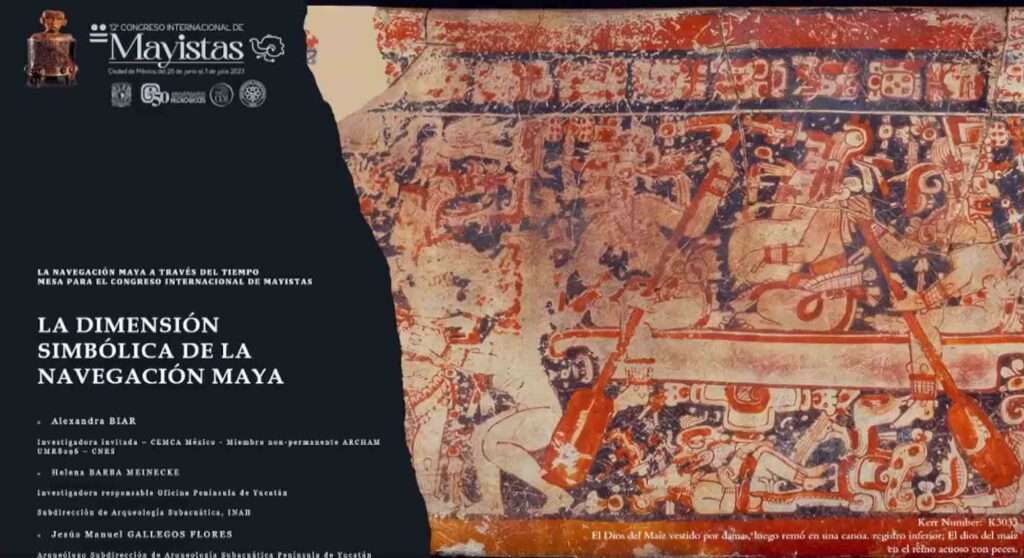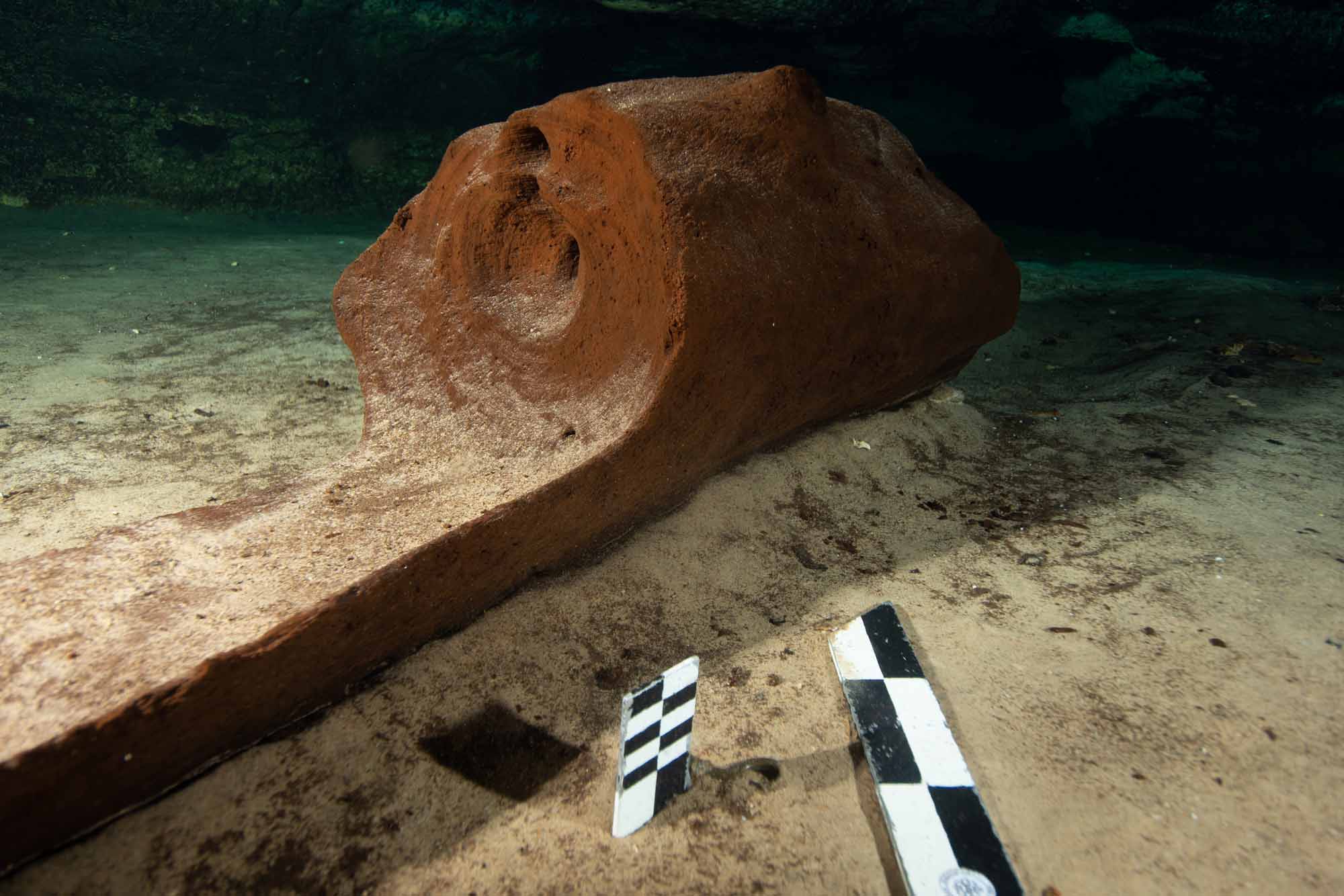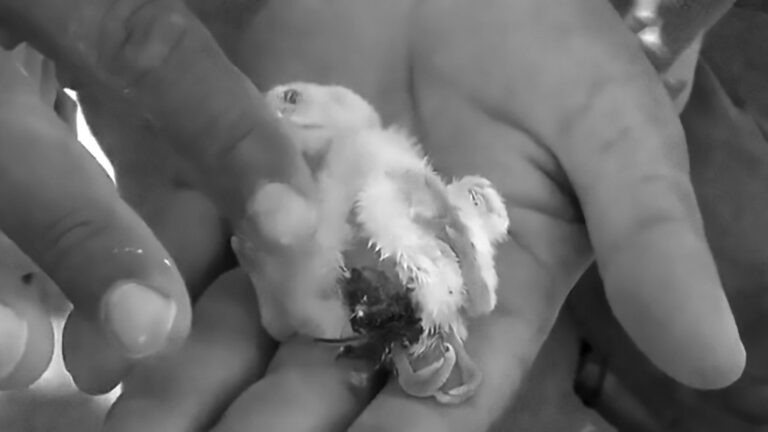Mexican boffins who found an ancient canoe carved from a single tree trunk say it may have been used in rituals symbolising the entrance to the underworld.
Underwater archaeologists found the dugout canoe in the San Andres cenote in Mexico’s Yucatan Peninsula in 2021.
A cenote is a natural well formed by the collapse of an overlying limestone crust, often used as a sacrificial site by the Mayas.
Various animal and human bone remains were found around the canoe, pointing to its likely ritual use, according to Mexico’s National Institute of Anthropology and History (INAH).
Furthermore, the canoe’s heavy bow and stern would have limited its efficiency in open seas, further supporting the ritual hypothesis.

The canoe has provisionally been dated to the Terminal Classic Maya civilisation, which lasted from 830 AD to 950 AD.
INAH said in a statement obtained by Newsflash on 29th June: “Two years ago, underwater archaeologists from the National Institute of Anthropology and History (INAH) discovered a dugout canoe inside a cenote as part of the archaeological salvage work conducted by the Ministry of Culture of the Mexican Government for the Tren Maya project.
“On 28th June, 2023, during the 12th International Congress of Mayanists, organised by the National Autonomous University of Mexico, specialists proposed the hypothesis of the ancient canoe’s ritual use based on initial studies conducted in laboratories in Mexico and abroad.
“Helena Barba Meinecke, the head of the Yucatan Peninsula Office of the Subdirectorate of Underwater Archaeology (SAS) at INAH, reported that dives carried out since October 2021 in the San Andres cenote – named after the archaeological site where the karst system is located – have allowed for the creation of 3D models of the canoe and precise measurements: 2.15 metres in length, 45 centimetres in width, and 36.5 centimetres in height.
“According to the archaeologist, who participated in the forum along with archaeologists Jesus Gallegos Flores from the SAS in the Yucatan Peninsula and Alexandra Biar from the National Centre for Scientific Research of France (CNRS), samples were taken of both the wood of the boat and bone remains discovered around it during the exploration of the cavity where the canoe was found.

“So far, 38 bone remains have been identified, corresponding to seven individuals of different animal species: armadillo, turkey, dog, and eagle; in addition, a human bone has been recognised, associated with a metatarsal bone from the left foot of an adult woman.
“The prevalence of armadillo bones and the presence of the human metatarsal lead experts to theorise the ritual use of the canoe and its placement in the cave before it became flooded.
“On one hand, they commented that the armadillo remains, whose swimming ability allows it to hold its breath and cross bodies of water by gripping its claws to the ground, would allude to the animal’s entrance to the underworld, considering the Mayan conception of flooded and semi-flooded caves and cenotes as portals to this cosmogonic space.
“Additionally, Alexandra Biar added that there are known images in Mayan ceramics where this animal appears as a ‘stool of the gods’, with figures resting their feet on it, which directly links to the archaeological evidence observed in the cenote.
“Both Biar and Gallegos further explained that the ritual use of the canoe is also supported by its own morphology, as having a heavy bow and stern would have limited its navigational capacity in more dynamic waters, thus not ruling out the possibility that it was created for symbolic purposes.
“Regarding the studies conducted on the wood of the canoe, Biar pointed out that carbon-14 analysis, carried out with the support of CNRS, has determined that the organic material dates back to the 16th century and not to the Terminal Classic period (830-950 AD) that predominates in the archaeological site of San Andres.

“Although this would indicate the continuity of Mayan ritual practices associated with bodies of water during the time of contact with the Spaniards, the specialists emphasised that studies conducted on the cenote water, at the Cinvestav Unit Merida, with the support of researcher Dalila Aldana Aranda, showed concentrations of microplastics that could affect dating, which is why new dives are planned to take additional samples of the wood and bone material from the submerged context.”
The Tren Maya is a 1,554-kilometre railway project that will interconnect the major cities and tourist regions of the Yucatan Peninsula.
To find out more about the author, editor or agency that supplied this story – please click below.
Story By: William McGee, Sub-Editor: Marija Stojkoska, Agency: Newsflash
The Ananova page is created by and dedicated to professional, independent freelance journalists. It is a place for us to showcase our work. When our news is sold to our media partners, we will include the link here.




